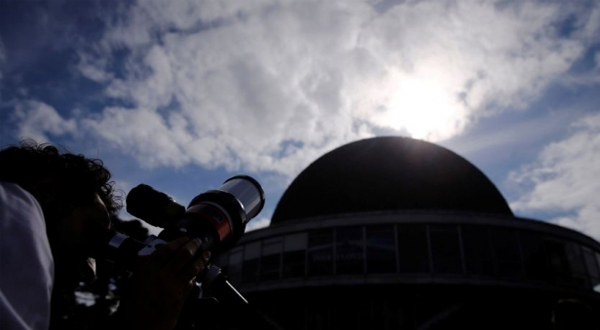PARIS: Astronomers celebrated Monday witnessing one of the highlights of the skywatchers’ year, when the Sun, Mercury and Earth all lined up — a phenomenon that happens just a dozen or so times per century.
Mercury was seen through telescopes as a black dot inching over the face of our star, providing a celestial spectacle lasting seven and a half hours.
“It’s something rare, because it requires the Sun, Mercury and Earth to be in almost perfect alignment,” said Pascal Descamps of the Paris Observatory.
The smallest recognised planet in the Solar System, Mercury completes an orbit every 88 days, and passes between the Earth and the Sun every 116 days.
But its orbit is tilted in relation to Earth’s, which means it usually appears — from our perspective — to pass above or below the Sun.
Thirteen times each century, however, the two orbits align such that even amateur astronomers can see the tiny planet tens of millions of kilometres away.
According to Britain’s Royal Astronomical Society (RAS), most of Western Europe, the western parts of North and West Africa, eastern North America, and most of South America was able to view the entire transit, which lasted from 1112 GMT to 1842 GMT.





